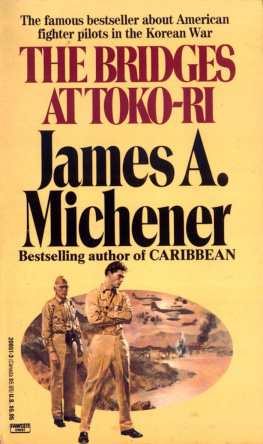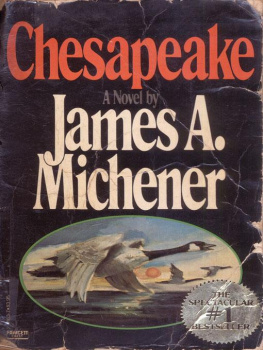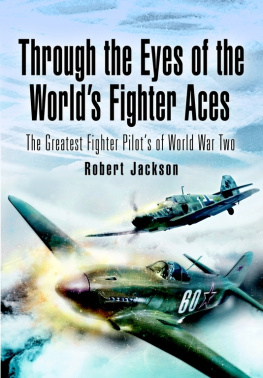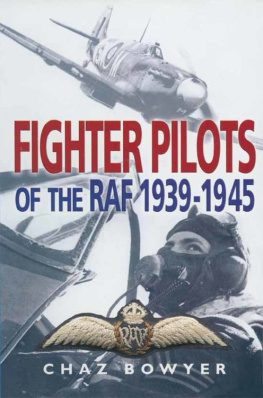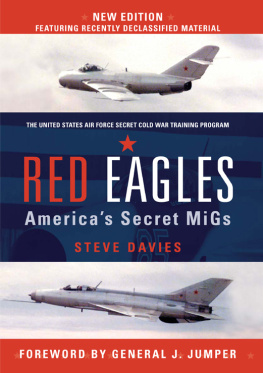James A. Michener - The Bridges at Toko-Ri
Here you can read online James A. Michener - The Bridges at Toko-Ri full text of the book (entire story) in english for free. Download pdf and epub, get meaning, cover and reviews about this ebook. year: 1984, publisher: Fawcett, genre: Adventure. Description of the work, (preface) as well as reviews are available. Best literature library LitArk.com created for fans of good reading and offers a wide selection of genres:
Romance novel
Science fiction
Adventure
Detective
Science
History
Home and family
Prose
Art
Politics
Computer
Non-fiction
Religion
Business
Children
Humor
Choose a favorite category and find really read worthwhile books. Enjoy immersion in the world of imagination, feel the emotions of the characters or learn something new for yourself, make an fascinating discovery.
- Book:The Bridges at Toko-Ri
- Author:
- Publisher:Fawcett
- Genre:
- Year:1984
- Rating:3 / 5
- Favourites:Add to favourites
- Your mark:
- 60
- 1
- 2
- 3
- 4
- 5
The Bridges at Toko-Ri: summary, description and annotation
We offer to read an annotation, description, summary or preface (depends on what the author of the book "The Bridges at Toko-Ri" wrote himself). If you haven't found the necessary information about the book — write in the comments, we will try to find it.
The Bridges at Toko-Ri — read online for free the complete book (whole text) full work
Below is the text of the book, divided by pages. System saving the place of the last page read, allows you to conveniently read the book "The Bridges at Toko-Ri" online for free, without having to search again every time where you left off. Put a bookmark, and you can go to the page where you finished reading at any time.
Font size:
Interval:
Bookmark:
In a field three miles from a village, Brubaker lay hiding in a rice paddy. What was he doing here, he wondered. Why wasnt he at home in Denver tending to his law practice, having dinner with his wife and daughters. He looked up and saw the enemy soldiers closing in ...
Also by James Michener:
Fiction
TALES OF THE SOUTH PACIFIC*
RETURN TO PARADISE*
SAYONARA*
SELECTED WRITINGS
THE FIRES OF SPRING*
HAWAII*
CARAVANS*
THE SOURCE*
THE DRIFTERS*
CENTENNIAL*
CHESAPEAKE*
THE WATERMEN THE COVENANT*
SPACE*
POLAND*
TEXAS*
LEGACY*
ALASKA*
JOURNEY CARIBBEAN*
THE NOVEL*
MEXICO
Nonfiction
THE BRIDGE AT ANDAU*
RASCALS IN PARADISE*
JAPANESE PRINTS: FROM EARLY MASTERS TO THE MODERN
IBERIA: SPANISH TRAVELS AND REFLECTIONS*
MODERN JAPANESE PRINT: AN APPRECIATION
PRESIDENTIAL LOTTERY: THE RECKLESS GAMBLE IN OUR ELECTORAL SYSTEM
SPORTS IN AMERICA*
KENT STATE: WHAT HAPPENED AND WHY*
THE FLOATING WORLD
*Published by Fawcett Books
THE
BRIDGES
AT
TOKO-RI
James A. Michener
FAWCETT CREST NEW YORK
Sale of this book without a front cover may be unauthorized. If this book is coverless, it may have been reported to the publisher as unsold or destroyed and neither the author nor the publisher may have received payment for it.
A Fawcett Crest Book
Published by Ballantine Books
Copyright 1953 by James A. Michener
All rights reserved under international and Pan-American Copyright Conventions, including the right to reproduce this book or portions thereof in any form. Published in the United States by Ballantine Books, a division of Random House, Inc., New York, and simultaneously in Canada by Random House of Canada Limited, Toronto.
ISBN 0-449-20651-3
This edition published by arrangement with Random House, Inc.
All the characters in this book are fictitious, and any resemblance to actual persons, living or dead, is purely coincidental.
Manufactured in the United States of America
First Fawcett Crest Edition: April 1973
First Ballantine Books Edition: June 1982
Twenty-seventh Printing: September 1993
To MARSHALL U. BEEBE
Jet Pilot
THE SEA was bitter cold. From the vast empty plains of Siberia howling winds roared down to lash the mountains of Korea, where American soldiers lost on patrol froze into stiff and awkward forms. Then with furious intensity the arctic wind swept out to sea, freezing even the salt spray that leaped into the air from crests of falling waves.
Through these turbulent seas, not far from the trenches of Korea, plowed a considerable formation of American warships. A battleship and two cruisers, accompanied by fourteen destroyers to shield against Russian submarines, held steady course as their icy decks rose and fell and shivered in the gale. They were the ships of Task Force 77 and they had been sent to destroy the communist-held bridges at Toko-ri.
Toward the center of this powerful assembly rode two fast carriers, the cause of the task force and its mighty arm. Their massive decks pitched at crazy angles, which for the present made takeoffs or landings impossible. Their planes stood useless, huddled together in the wind, lashed down by steel cables.
It was strange, and in some perverse way resolutely American, that these two carriers wallowing in the dusk bore names which memorialized not stirring victories but humiliating defeats, as if by thus publishing her indifference to catastrophe and her willingness to surmount it, the United States were defying her enemies. To the east, and farther out to sea, rode the Hornet, whose predecessor of that name had absorbed a multitude of Japanese bombs and torpedoes, going down off Guadalcanal, while the inboard carrier, the Savo, would forever remind the navy of its most shameful defeat in history, when four cruisers sank helpless at Savo Island, caught sleeping by the audacious Japanese.
Now, as night approached the freezing task force, the bull horn on the Savo rasped out, Prepare to launch aircraft! And it was obvious from the way her deck was arranged that the carrier already had some planes in the skies over Korea, and every man who watched the heaving sea wondered how those planes could possibly get back aboard.
The bull horn, ignoring such problems, roared, Prepare to launch helicopter! and although the deck pitched in abandon, rotors began to turn, slowly at first and then with lumbering speed.
Now the great carrier struck a sea trough and slid away, her deck lurching, but relentlessly the bull horn cried, Move jets into position for launching, and the catapult crew, fighting for footing on the sliding deck, sprang swiftly into action, inching two heavy Banshees onto the catapults, taking painful care not to allow the jets to get rolling, lest they plunge overboard with some sudden shifting of the deck.
Start jet engines, roared the insistent bull horn.
The doctor, who had to be on deck in case of crash, looked at the heaving sea and yelled to the crane operator, They may launch these jets, but theyll never get em back aboard.
The craneman looked down from his giant machine, which could lift a burning plane and toss it into the sea, and shouted, Maybe theyre planning to spend the night at some air force field in Korea. Along with the ones that are already up.
But at this instant all ships of the task force swung in tight circles and headed away from the open sea, straight for the nearby cliffs of Korea, and when the turn was completed, the deck of the Savo mysteriously stabilized. The effects of wind and sea neutralized each other, and planes returning from the bombardment of Korea now had a safe place to land.
But before they could do so the bull horn cried eerily into the dusk, Launch helicopter! and the crazy bird, its two rotors spinning so slowly the blades could be seen, stumbled into the air, and the horn cried, Launch jets!
Then, as the great carrier rode serenely amid the storms, the catapult officer whirled one finger above his head and a tremendous, almost unbearable roar arose and twin blasts of heat leaped from each Banshee, burning the icy air more than a hundred feet aft. Now the officer whirled two fingers and the roar increased and white heat scorched the deck of the carrier and the twin engines whipped to a meaningless speed of 13,000 revolutions a minute and the Banshee pilot, forcing his head back against a cushion, saluted and the catapult officers right hand whipped down and the catapult fired.
Nine tons of jet aircraft were swept down the deck at a speed of more than 135 miles an hour. Within less than 150 feet the immense Banshee was airborne, and by the time it reached the forward edge of the carrier, it was headed toward its mission. Four times the catapults fired and four times heavy jets leaped into the darkening sky and headed for the coastline of Korea.
As soon as they had left, the bull horn wailed, Respot planes. On the double. We must recover the Korean jets immediately.
When this announcement was made thirty old-fashioned propeller planes were already lashed down on the after part of the flight deck in precisely that area needed for landing the jets which now appeared overhead. The prop planes had been stowed there to permit catapult take-offs, and now they must be moved forward. So on the wooden deck, swept by icy winds, hundreds of young men in varicolored uniforms sped to the task of clearing the landing space. Men in green stowed the catapult gear so that no remnant of the powerful machine was visible. Other men in yellow leaped upon the deck and began to indicate the course each plane must follow on its way to forward stowage. Dozens of tough young men in blue leaned their shoulders against the planes, swung them laboriously into position and pushed them slowly into the biting wind. In blazing red uniforms other men checked guns or fueled empty craft while plane captains in brown sat in cockpits and worked the brakes to prevent accident. Darting about through the milling, pushing, shouting deck hands three-wheeled jeeps of vivid yellow and lumbering tractors in somber gray hurried to their jobs, while over all towered the mighty arms of the enormous black and sinister crane. Behind it lurked two weird men in fantastic suits of ashen gray asbestos, their faces peering from huge glassine boxes, ready to save the pilot if a crashed plane should burn, while in back of them, clothed in snowy white, the doctor waited, for death was always close upon the carrier deck.
Next pageFont size:
Interval:
Bookmark:
Similar books «The Bridges at Toko-Ri»
Look at similar books to The Bridges at Toko-Ri. We have selected literature similar in name and meaning in the hope of providing readers with more options to find new, interesting, not yet read works.
Discussion, reviews of the book The Bridges at Toko-Ri and just readers' own opinions. Leave your comments, write what you think about the work, its meaning or the main characters. Specify what exactly you liked and what you didn't like, and why you think so.

